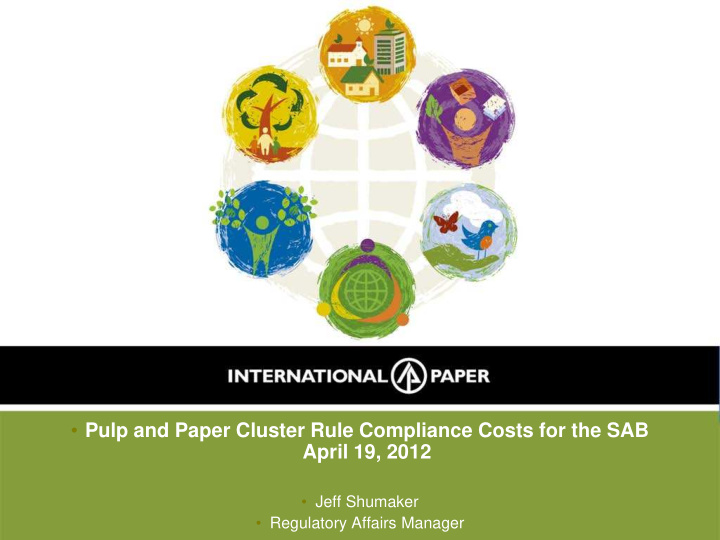



• Pulp and Paper Cluster Rule Compliance Costs for the SAB April 19, 2012 • Jeff Shumaker • Regulatory Affairs Manager
International Paper Cluster Rule Compliance Costs (“ex post”) • International Paper brought 27 mills into “cluster compliance” • All but 2 of these mills are integrated Kraft pulp and paper mills • 7 of these mills have been closed permanently • 5 of these mills are no longer owned by International Paper • International Paper acquired three companies and formed two new companies through divestiture in this timeframe • Cluster capital expenses began in about 1993 reflecting early commitment to ECF - any baseline approach needs to recognize a high level of pre-rule spending • Cluster rule capital costs were ~$600 million 2
Cumulative Cluster Rule Compliance Capital Cost (“ex post”) • Cluster “water” rule compliance costs were ~$200 million • Cluster “air” rule compliance costs were ~$400 million including about ~$28 million for MACT II costs • “Bubble” requirements in MACT II indeed achieved better emissions reduction at much less cost • Cluster compliance costs for mills that later closed were ~$140 million 3
Cluster “Air” Rule Industry-Wide Capital Cost Comparison Case Capital Costs ($billions) EPA projection - “ex ante” 1.54 Projection* based on 2 IP actual costs - “ex post” (0.4 for IP alone) NCEE baseline approach 0.5 to 0.8 estimate - “ex post” *25 Kraft mills extrapolated to 112 industry Kraft mills 4
Conclusion International Paper thanks the Science Advisory Board for allowing the presentation of this “ex post” cluster compliance cost information, looks forward to continuing our long-standing practice of providing EPA information in order to ensure data-driven regulatory decisions and working collaboratively to ensure pragmatic environmental rules. 5
Recommend
More recommend